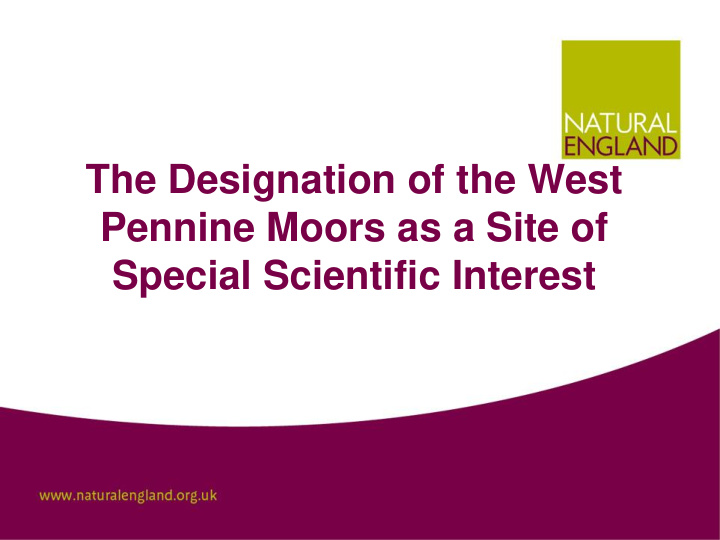



The Designation of the West Pennine Moors as a Site of Special Scientific Interest
Cotton grass at Rivington Pike – all site pictures courtesy of Richard Berkmar
What is this presentation for To inform interested people about: • What Sites of Special Scientific Interest (SSSI) are • How and why SSSIs get designated • Why has the West Pennine Moors been chosen • Where are we in the process
What are SSSIs SSSIs are the country's very best wildlife and geological sites. They include some of the most spectacular and beautiful habitats; wetlands teeming with wading birds, winding chalk rivers, flower-rich meadows, windswept shingle beaches and remote upland peat bogs. There are over 4,100 Sites of Special Scientific Interest (SSSIs) in England, covering around 8% of the country's land area.
How and why are they designated • Sites of Special Scientific Interest (SSSIs) give legal protection to the best sites for wildlife and geology in England – Natural England has an SSSI notification strategy which sets out context in which we decide which areas to consider. • Natural England now has responsibility for identifying and protecting the SSSIs in England under the Wildlife and Countryside Act 1981 (as amended).
The West Pennine Moors – why here? • Natural England were asked to look at this area by a consortium of local interests – ie the West Pennine Management Committee and several MPs • It is an area rich in wildlife and important habitats • It has excellent carbon storage capacity
How do we go about designating an SSSI?
Where are we now?
What next? • Wait for the survey to be completed as this will inform the boundary • Collate all the other species data and produce a report for Natural England board (Feb. 2013)
Recommend
More recommend